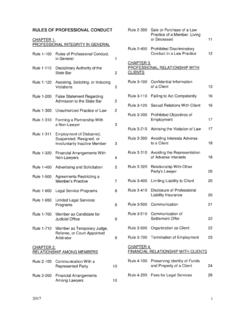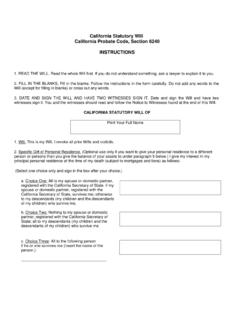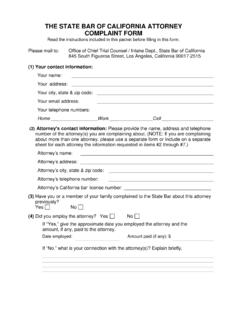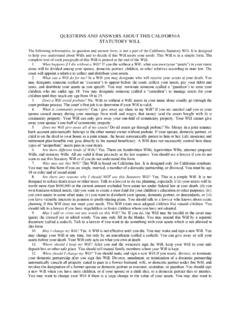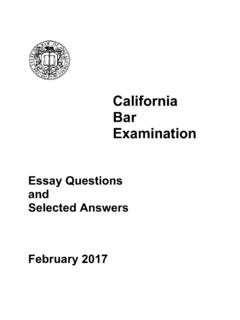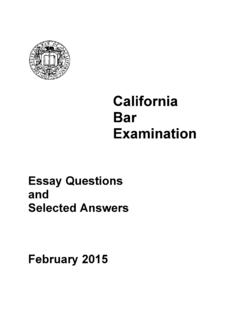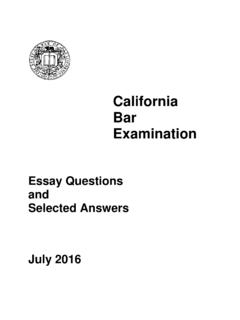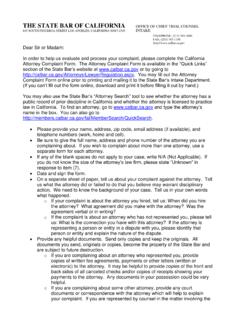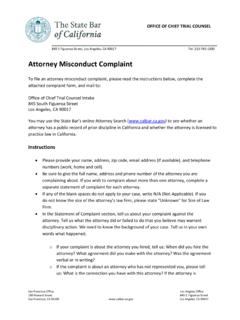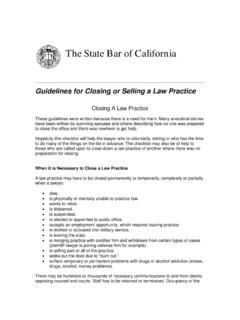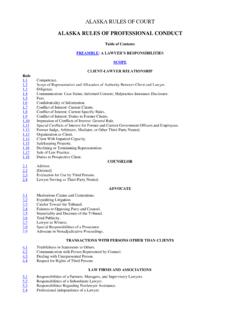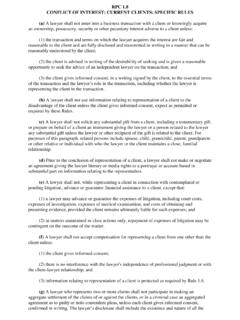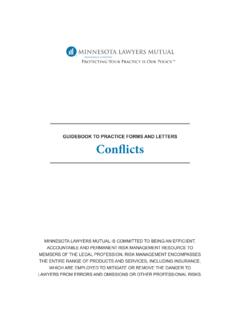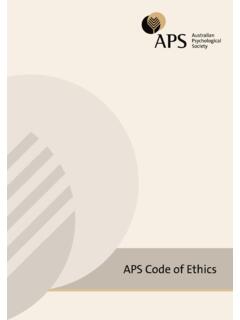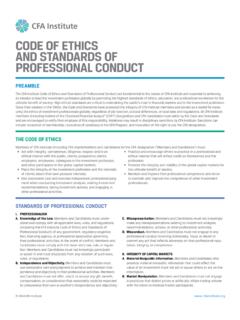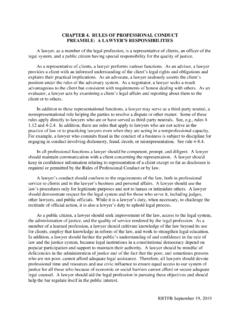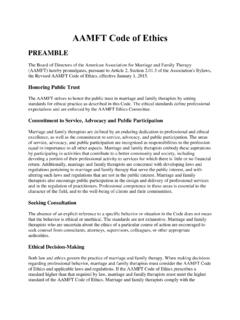Transcription of Rule 1.7 Conflict of Interest: Current Clients (Rule ...
1 1 Rule Conflict of interest : Current Clients (Rule Approved by the Supreme Court, Effective November 1, 2018) (a) A lawyer shall not, without informed written consent* from each client and compliance with paragraph (d), represent a client if the representation is directly adverse to another client in the same or a separate matter. (b) A lawyer shall not, without informed written consent* from each affected client and compliance with paragraph (d), represent a client if there is a significant risk the lawyer s representation of the client will be materially limited by the lawyer s responsibilities to or relationships with another client, a former client or a third person,* or by the lawyer s own interests.
2 (c) Even when a significant risk requiring a lawyer to comply with paragraph (b) is not present, a lawyer shall not represent a client without written* disclosure of the relationship to the client and compliance with paragraph (d) where: (1) the lawyer has, or knows* that another lawyer in the lawyer s firm* has, a legal, business, financial, professional, or personal relationship with or responsibility to a party or witness in the same matter; or (2) the lawyer knows* or reasonably should know* that another party s lawyer is a spouse, parent, child, or sibling of the lawyer, lives with the lawyer, is a client of the lawyer or another lawyer in the lawyer s firm,* or has an intimate personal relationship with the lawyer.
3 (d) Representation is permitted under this rule only if the lawyer complies with paragraphs (a), (b), and (c), and: (1) the lawyer reasonably believes* that the lawyer will be able to provide competent and diligent representation to each affected client; (2) the representation is not prohibited by law; and (3) the representation does not involve the assertion of a claim by one client against another client represented by the lawyer in the same litigation or other proceeding before a tribunal. (e) For purposes of this rule, matter includes any judicial or other proceeding, application, request for a ruling or other determination, contract, transaction, claim, controversy, investigation, charge, accusation, arrest, or other deliberation, decision, or action that is focused on the interests of specific persons,* or a discrete and identifiable class of persons.
4 * Comment [1] Loyalty and independent judgment are essential elements in the lawyer s relationship to a client. The duty of undivided loyalty to a Current client prohibits 2 undertaking representation directly adverse to that client without that client s informed written consent.* Thus, absent consent, a lawyer may not act as an advocate in one matter against a person* the lawyer represents in some other matter, even when the matters are wholly unrelated. (See Flatt v. Superior Court (1994) 9 275 [36 537].) A directly adverse Conflict under paragraph (a) can arise in a number of ways, for example, when: (i) a lawyer accepts representation of more than one client in a matter in which the interests of the Clients actually Conflict ; (ii) a lawyer, while representing a client, accepts in another matter the representation of a person* who, in the first matter, is directly adverse to the lawyer s client; or (iii) a lawyer accepts representation of a person* in a matter in which an opposing party is a client of the lawyer or the lawyer s law firm.
5 * Similarly, direct adversity can arise when a lawyer cross-examines a non-party witness who is the lawyer s client in another matter, if the examination is likely to harm or embarrass the witness. On the other hand, simultaneous representation in unrelated matters of Clients whose interests are only economically adverse, such as representation of competing economic enterprises in unrelated litigation, does not ordinarily constitute a Conflict of interest and thus may not require informed written consent* of the respective Clients . [2] Paragraphs (a) and (b) apply to all types of legal representations, including the concurrent representation of multiple parties in litigation or in a single transaction or in some other common enterprise or legal relationship.
6 Examples of the latter include the formation of a partnership for several partners* or a corporation for several shareholders, the preparation of a pre-nuptial agreement, or joint or reciprocal wills for a husband and wife, or the resolution of an uncontested marital dissolution. If a lawyer initially represents multiple Clients with the informed written consent* as required under paragraph (b), and circumstances later develop indicating that direct adversity exists between the Clients , the lawyer must obtain further informed written consent* of the Clients under paragraph (a). [3] In State Farm Mutual Automobile Insurance Company v. Federal Insurance Company (1999) 72 1422 [86 20], the court held that paragraph (C)(3) of predecessor rule 3-310 was violated when a lawyer, retained by an insurer to defend one suit, and while that suit was still pending, filed a direct action against the same insurer in an unrelated action without securing the insurer s consent.
7 Notwithstanding State Farm, paragraph (a) does not apply with respect to the relationship between an insurer and a lawyer when, in each matter, the insurer s interest is only as an indemnity provider and not as a direct party to the action. [4] Even where there is no direct adversity, a Conflict of interest requiring informed written consent* under paragraph (b) exists if there is a significant risk that a lawyer s ability to consider, recommend or carry out an appropriate course of action for the client will be materially limited as a result of the lawyer s other responsibilities, interests, or relationships, whether legal, business, financial, professional, or personal.
8 For example, a lawyer s obligations to two or more Clients in the same matter, such as several individuals seeking to form a joint venture, may materially limit the lawyer s ability to recommend or advocate all possible positions that each might take because of the lawyer s duty of loyalty to the other Clients . The risk is that the lawyer may not be 3 able to offer alternatives that would otherwise be available to each of the Clients . The mere possibility of subsequent harm does not itself require disclosure and informed written consent.* The critical questions are the likelihood that a difference in interests exists or will eventuate and, if it does, whether it will materially interfere with the lawyer s independent professional judgment in considering alternatives or foreclose courses of action that reasonably* should be pursued on behalf of each client.
9 The risk that the lawyer s representation may be materially limited may also arise from present or past relationships between the lawyer, or another member of the lawyer s firm*, with a party, a witness, or another person* who may be affected substantially by the resolution of the matter. [5] Paragraph (c) requires written* disclosure of any of the specified relationships even if there is not a significant risk the relationship will materially limit the lawyer s representation of the client. However, if the particular circumstances present a significant risk the relationship will materially limit the lawyer s representation of the client, informed written consent* is required under paragraph (b).
10 [6] Ordinarily paragraphs (a) and (b) will not require informed written consent* simply because a lawyer takes inconsistent legal positions in different tribunals* at different times on behalf of different Clients . Advocating a legal position on behalf of a client that might create precedent adverse to the interests of another client represented by a lawyer in an unrelated matter is not sufficient, standing alone, to create a Conflict of interest requiring informed written consent.* Informed written consent* may be required, however, if there is a significant risk that: (i) the lawyer may temper the lawyer s advocacy on behalf of one client out of concern about creating precedent adverse to the interest of another client; or (ii) the lawyer s action on behalf of one client will materially limit the lawyer s effectiveness in representing another client in a different case, for example, when a decision favoring one client will create a precedent likely to seriously weaken the position taken on behalf of the other client.
